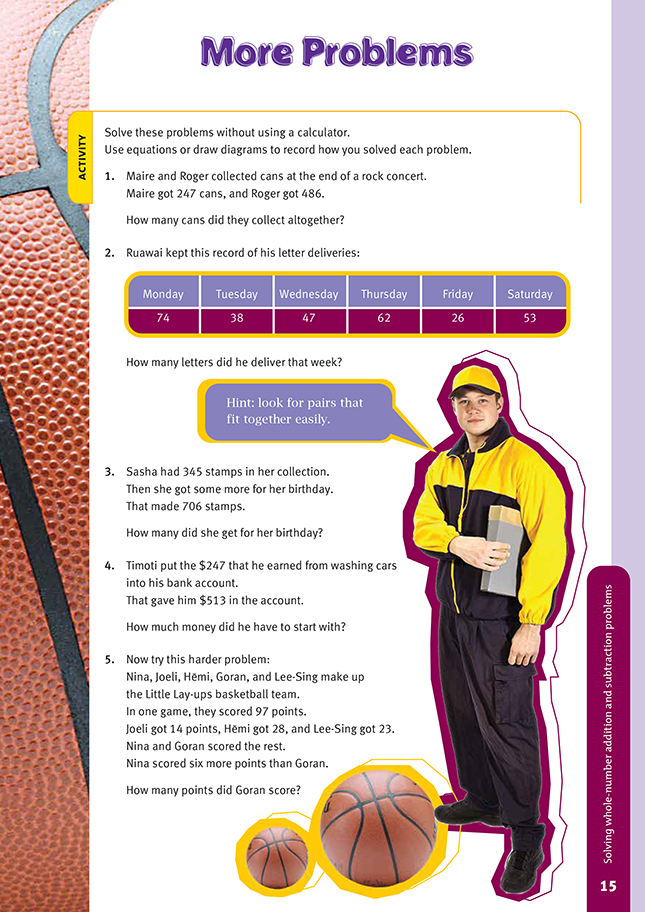This is a level 3 number link activity from the Figure It Out series. It relates to Stage 6 of the Number Framework.
A PDF of the student activity is included.
Click on the image to enlarge it. Click again to close. Download PDF (223 KB)
use mental strategies to solve addition and subtraction problems
FIO, Link, Number, Book Two, More Problems, page 15
Once again, the instruction not to use a calculator encourages students to focus on developing and recording strategies rather than on answers. The equations and diagrams that the students produce should reflect their actual thinking and may not be the conventional working forms. You should encourage this. As with the earlier pages, you could ask the students to work in problem-solving groups of four to encourage peer teaching and maximum involvement in the class.
The strategies shown on pages 10–11 of the student book would be good models for this activity.
The hint in question 2 is intended to encourage the students to find pairs that make 100 (that is, 74 and 26, 38 and 62, and 47 and 53), but some students may choose to pair up 74 with 47 to get 121 and 62 and 26 to get 88.
Question 5 presents a challenging set of relationships. There are two unknowns, Nina’s and Goran’s scores, so the relationship between them will need to be examined after the other scores are subtracted. Those students who are having difficulty may need hints such as “How much did Nina and Goran score together?”
and “If they had scored the same amount, how much would they have each scored?” At this stage, you could present the students with a table that shows their findings and the relationship between them.
As an extension, you could ask the students more questions that follow the model of questions 3 and 4. These present a different cognitive challenge to students than the more common result-unknown problems.
Answers to Activity
Answers and possible methods are:
1. 733 cans
247 + 486
Try: 250 + 500 = 750
750 – 3 = 747
747 – 14 = 733
or
247 + 400 = 647
647 + 80 = 727
727 + 6 = 733
2. 300 letters
74 + 26 = 100, 38 + 62 = 100, 47 + 53 = 100
100 + 100 + 100 = 300
or (using rounding)
70 + 40 + 50 + 60 + 30 + 50 = 300
+ 4 – 2 – 3 + 2 – 4 + 3 = 0
300 – 0 = 300
3. 361 stamps
345 + = 706
345 + 55 = 400, 400 + 300 = 700, 700 + 6 = 706
55 + 300 + 6 = 361
4. $266
" + 247 = 513
247 + 3 = 250, 250 + 250 = 500, 500 + 13 = 513
3 + 250 + 13 = 266
5. Goran got 13 points. (Nina got 19 points.)
97 – (14 + 28 + 23) = 97 – 65
= 32
32 = 6 + (2 x Goran’s score)
32 – 6 = 2 x Goran’s score
26 = 2 x Goran’s score
13 = Goran’s score

